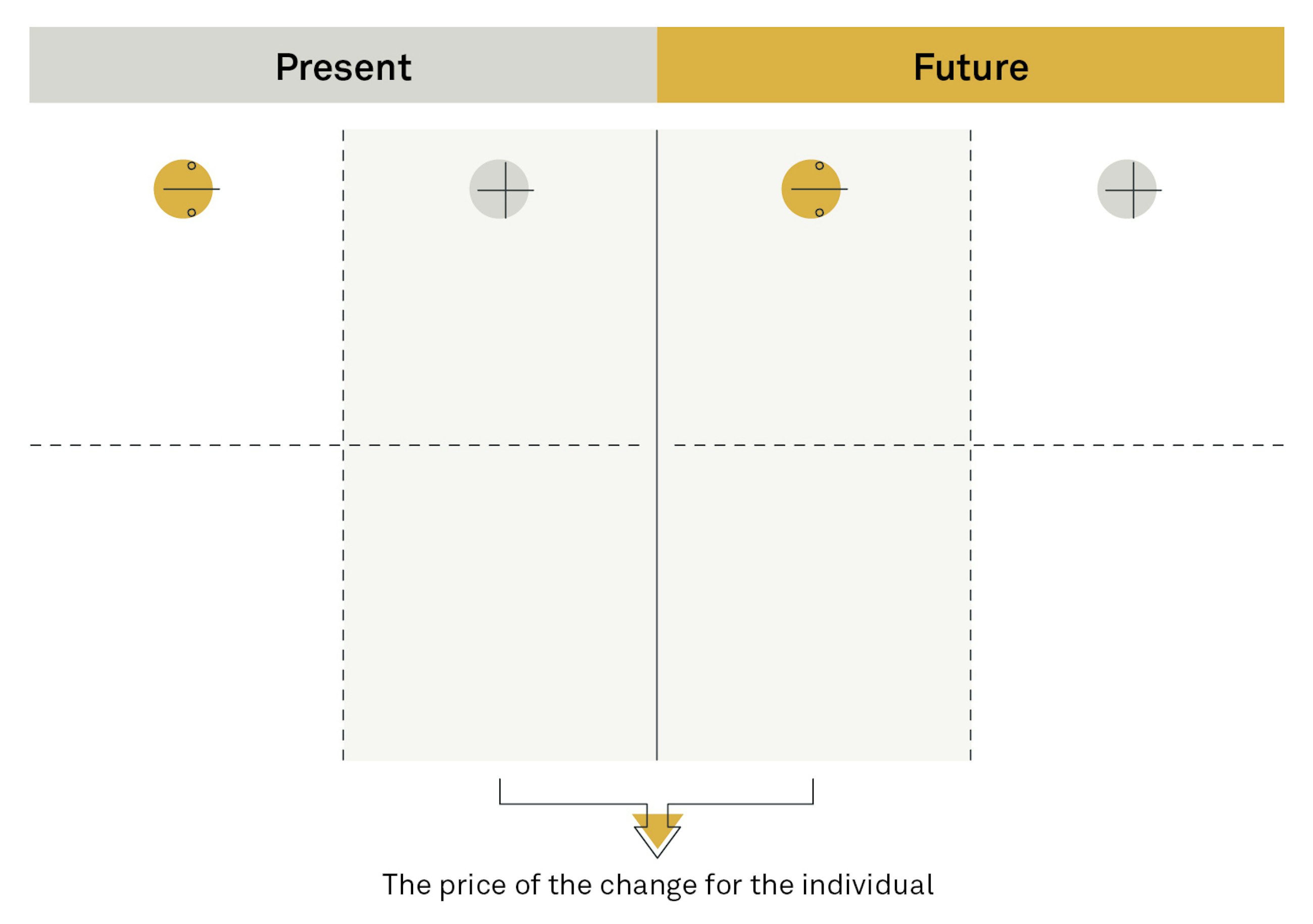8 February 2022
It sounds so easy. Almost naive. Change for the sake of change. Make it happen. Preferably now.
We could go on. The words surrounding change and transformation are probably top three in any business. Management wants change. Programme managers want change.
"It will be super exciting."
Management
"Not for us."
Organisation
According to Forbes, 62% of employees do not like to leave their comfort zone. They are not up for developmental change, transitional change or transformational change. They are not up for improvement and optimisation, and they are certainly not up for fundamental changes in culture, core values and operations.
Everyone working professionally with change communication knows this. But then what? Are we still conducting core story and key message exercises that support the “it will be super exciting” management lingo? The slightly depressing answer is: “Yes”.
What happened? How did we NOT stop and say: “This will never work”? Great change communication has never been produced by management. It might be that management conducts the roll-out, sets up the channels for internal communication, points out key stakeholders, designs interview and workshop formats to gather insights for key messages and the ever so important core story and controls the rhythm of important timing in the communication plan. This is what management typically does.
Planning and structure play a vital role – indeed. Your odds of a successful implementation will significantly increase when designing an impactful change communication plan for the desired change project. Without the plan, chances are not great. Studies show that the chance of creating engagement and impact increases by up to 73%, according to the Project Management Institute (PMI), Pulse of the Profession, when management focuses on employee strengths and employees participate actively in the roll-out communication, giving them tools (communication channels) to provide perspectives and implement real initiatives to change the traditional top-down approach. And here is an important point: The traditional top-down approach is becoming less and less impactful.
The way management communicates reflects the culture. If there is an honest and authentic culture, their communication will obviously reflect that. Sadly, for many companies, collective behaviour and communication controlled by management are often driven by conservative thinking. And if you try to control everything and please everyone, you will end up pleasing no one. Be authentic to win people’s hearts. Build common ground. Accept that the organisation actually controls the understanding and communication of the change. Changing conversations through simple and honest communication is truly fundamental to successful impact.
The most successful transformations in any business were created through strong and caring relations. Between management and the organisation. Between people who wanted to do good for society, their company and the employees. The ability to come up with provocative and profound ideas and communication that would engage the whole organisation and not only management.
The nature of great change communication will always consist of something great that aims at building long-lasting relations and a strong culture and starting a movement that is far bigger than the one started in the management team.
Strong relations between good companies and their employees.
This will make change!





